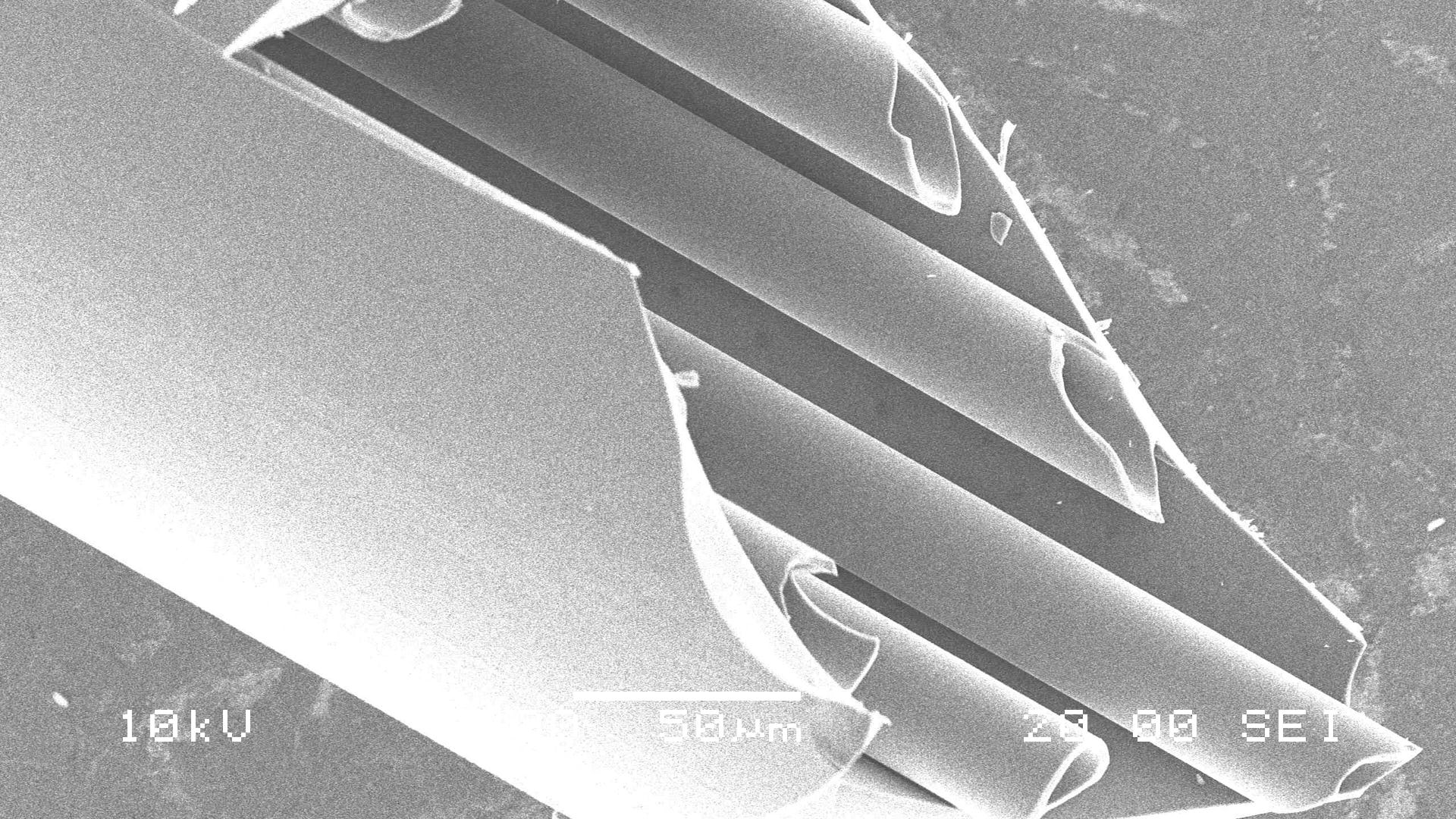Project status
In progress
Duration
Open-ended
In progress
Open-ended

Optical fibre can do much more than just guiding light from A to B. We carry out research into novel types of optical fibre to create exciting capabilities far beyond those of conventional fibre used to transmit information in global telecommunications networks.
Many of our fibres have a microstructure – typically a matrix of air holes that run along the length of the fibre. This is known as photonic crystal fibre or PCF. Through careful design, the microstructure enables us to control how light propagates in the fibre as well as the response of the fibre itself to the light. We fabricate our own fibre and also carry out fibre processing by tapering to create novel fibre devices.
In solid-core PCF, the light propagates in a glass core guided by a matrix of air holes surrounding it. The relatively large difference in refractive index between the air and the glass, in which light travels more slowly, means that light can be more tightly confined to the core than in conventional optical fibre. The resulting high intensities produce a large nonlinear response in which light generates new wavelengths or colours as it propagates. You can read about how we use this type of fibre for photon-pair generation in our quantum optics section.
Another type of fibre that we have developed has a hollow core. In this type of fibre, particular wavelengths of light cannot escape through the very thin glass walls due to destructive interference between different optical paths. This so-called anti-resonance effect enables light to be guided in the hollow core with very little interaction with the glass at all. The hollow-core fibre shown above can be used to deliver both short, powerful pulses of light for medical applications and long-wavelength light where glass is not transparent. By filling the hollow core with gas or vapour, we can study light-matter interactions and build new types of lasers and quantum memories.